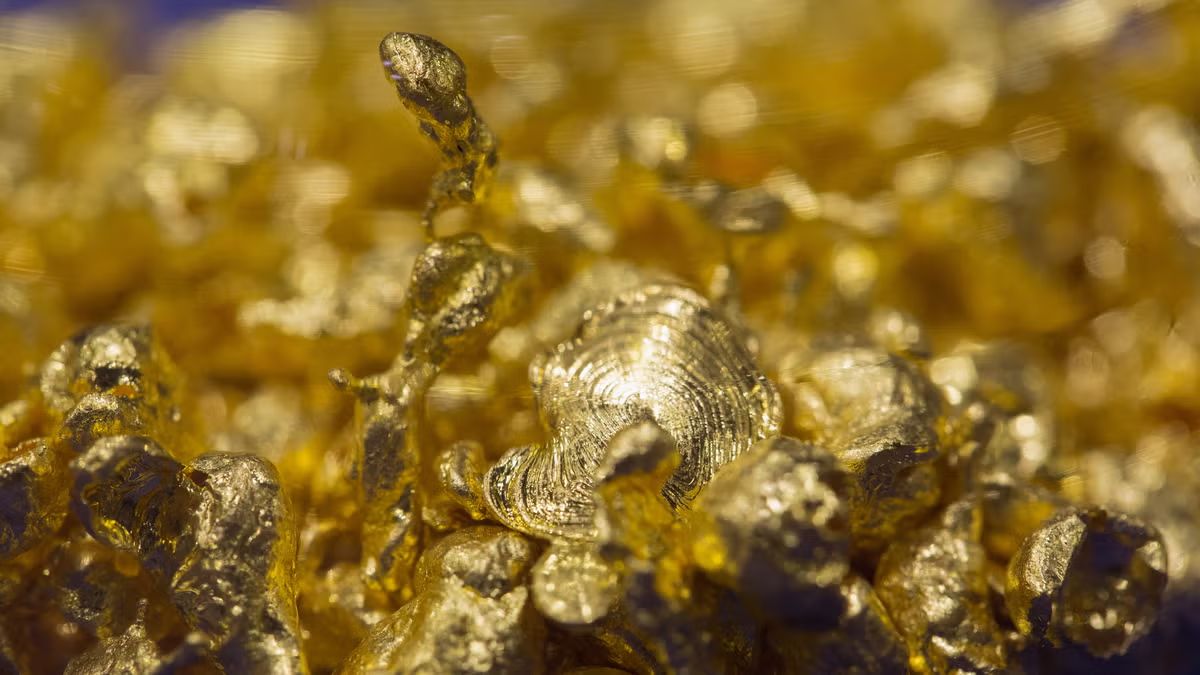China’s geologists have announced a major discovery that could reshape the country’s mining landscape. Deep beneath Hunan’s Wangu gold field lies what may be one of the largest undeveloped gold deposits ever found in the region — possibly more than 1,000 metric tons of gold, with around 300 tons already confirmed at shallower levels. The discovery is valued at nearly 600 billion yuan, making it both a scientific milestone and an economic talking point.
But before jumping to conclusions, geologists are reminding everyone that these numbers are preliminary and will evolve as more data comes in. Resource estimates can rise or fall with every new drill hole, and knowing what’s really in the ground takes time, precision, and patience.
The findings and reporting come from the Geological Bureau of Hunan Province and the Hunan Provincial Institute of Geology.
Scale
The Wangu discovery describes over 40 gold-bearing veins extending to about 2,000 meters deep (roughly 6,560 feet). Current models suggest the mineralization could reach as far as 3,000 meters (about 9,840 feet).
These figures mark what geologists call a first-pass estimate, where initial drilling turns a promising hunch into a testable target.
To put this into perspective, South Africa’s South Deep mine—one of the largest in the world—contains around 28 million ounces (close to 870 tons) of proven and probable gold reserves. The Wangu numbers, if verified, would make this deposit one of China’s largest by far.
Exploration
The discovery didn’t happen overnight. Teams drilled tens of thousands of feet of rock core, mapped structures, and built 3D models to track the gold veins at depth. This kind of exploration blends traditional geology with advanced modeling to see how the ore body behaves below ground.
“Many drilled rock cores showed visible gold,” said Chen Rulin, an ore-prospecting expert with the Geological Bureau of Hunan Province.
Chen also noted one impressive sample from 2,000 meters deep that reached nearly 138 grams per ton (g/t) — an exceptionally high result for a single interval. However, experts caution that a few rich samples don’t define an entire deposit.
In mining, what matters most is average grade, continuity, and thickness — whether the rich sections connect over enough distance to make large-scale extraction profitable.
Depth
Depth is both an opportunity and a challenge. The deeper the ore, the higher the costs for drilling, ventilation, cooling, and hauling rock to the surface. Engineers will look for the “sweet spots” — thick, continuous veins where gold concentrations are high enough to offset the expense of deep mining.
In orogenic gold systems like this one, grades can vary sharply from one vein to another. According to a recent USGS synthesis, many of these systems average around 16 g/t, with some deposits far richer and others leaner.
| Factor | Why It Matters |
|---|---|
| Grade | Determines how much gold per ton of ore. |
| Depth | Increases cost, heat, and water pressure. |
| Continuity | Needed to sustain safe and profitable mining. |
| Cutoff Grade | Minimum gold content needed to make mining worthwhile. |
As costs rise, companies often adjust their cutoff grade, meaning only the richest sections are mined while lower-grade material is left behind.
Geology
The Wangu field sits within the Jiangnan orogen, an ancient collision zone where continental plates once met and fractured. These geological “wounds” became conduits for hot fluids carrying minerals, including gold.
Northeastern Hunan is already known as one of China’s richest gold belts, with earlier estimates putting total resources above 315 tons before this new find. Recent studies suggest overlapping pulses of mineralization helped build up thick, persistent gold veins over millions of years.
Typical rocks in the area include quartz veins, altered slates, and breccias, along with evidence of hydrothermal alteration like sericitization and carbonation — textbook signs of orogenic gold systems.
A 2024 paper noted that the Wangu and neighboring Huangjindong deposits sit near late Mesozoic granites and along northeast-trending faults — structures that likely guided gold-bearing fluids.
These faults are crucial because they act as pathways for mineralization. The ongoing 3D modeling effort uses these structures to predict where future drilling might intercept the richest gold zones.
Future
What happens next? More drilling, more assays, and more modeling. Early numbers always shift as additional data refines the picture. The total resource could rise if deeper holes confirm thick, connected zones — or drop if continuity turns out weaker than expected.
If results remain strong, the next step will be reserve conversion — turning early-stage resources into proven, mineable reserves. That’s when engineers begin mine design, environmental studies, and financial modeling.
If the richer veins prove patchy or too scattered, attention will focus on mining smaller but higher-grade pockets first. Either way, the field is already shaping up as one of China’s most significant gold discoveries in years.
The Wangu deposit sits in the right place geologically and fits the profile of a major orogenic gold system. What remains is to prove that these veins are not just rich, but continuous — capable of sustaining a mine safely and profitably for decades to come.
FAQs
Where is the Wangu gold field?
It’s located in Hunan Province, China, within the Jiangnan orogenic belt.
How much gold could be there?
Early estimates suggest over 1,000 metric tons, valued at 600 billion yuan.
Who discovered the deposit?
The Geological Bureau of Hunan Province and the Hunan Provincial Institute of Geology.
What is the depth of the gold veins?
Most are around 2,000 meters deep, with projections down to 3,000 meters.
What happens next in exploration?
More drilling and modeling to confirm grade, continuity, and economic potential.

















